
iSight
iSight - Key Components

iSight - Application Capabilities
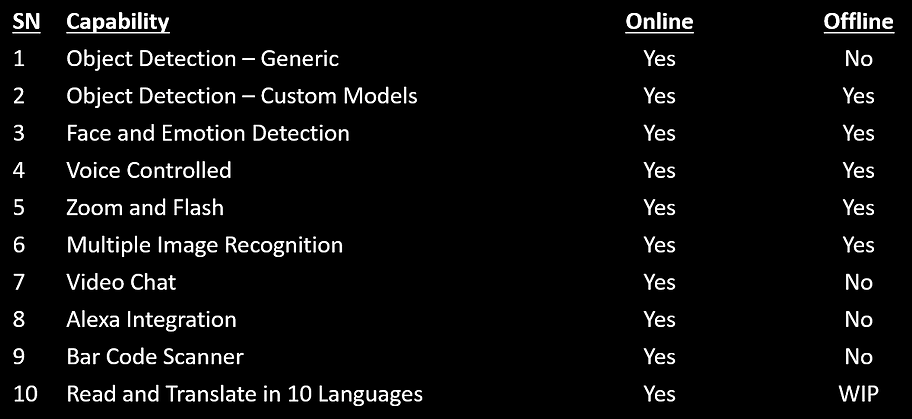
iSight – Development Tools
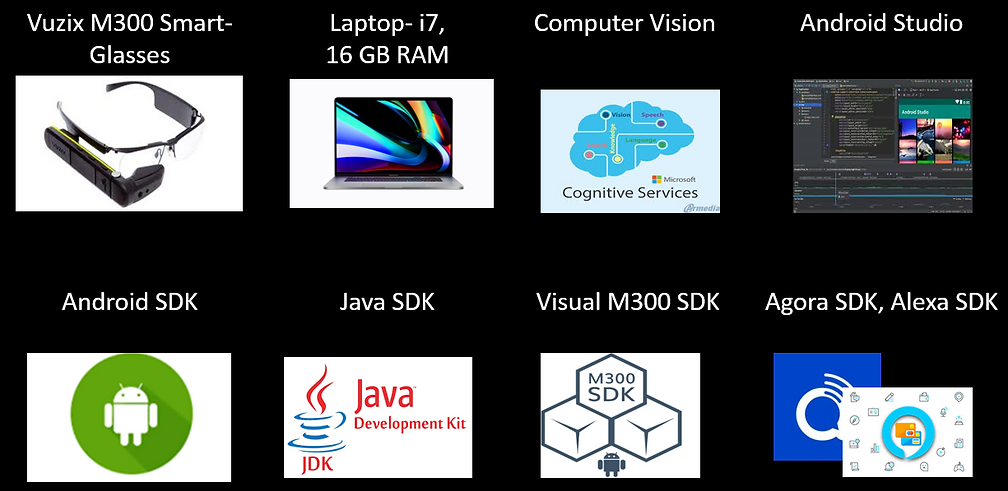
Instruction's
1. Set up the Development Environment
a.Download Android Studio.
b.Select Android 23 (Marshmallow) while configuring the environment
(The M300 works with Android SDK v23).
c.Download M300 SDK as per the instruction given on the Vuzix
portal.
2. Set up Vuzix M-300
a.Set up Vuzix M300 Augmented Reality Glasses as per the M300 user
manual.
b.Set up a stable Wi-Fi connection as specified in the M300 user
manual.
c.Run available demos (video_hw_encoding, camera_flash,
camera_focus, barcode_v3).
d.Validate that the demos work.
3. Setup Microsoft Vision API's
a.Create an Azure account.
b.Create Services for Computer Vision API.
c.Generate Computer Vision keys to be used in the main program.
These keys contain the access to Azure's respective APIs
4. Test Microsoft Vision API's
a.Use Azure Cognitive and AI API's to perform video analytics.
b.The Azure API's will determine various things like people
detection, emotion analysis, object detection, optical character
reading. The testing tool is provided by Microsoft on the Microsoft
AI portal.
5. Coding
a.Create a new Android project with a form and two buttons – one for
a single image click, and another for continuous image clicks. Take
appropriate functions from Vuzix Sample Projects that helps in image
capture.
b.Converting the captured imagebytes to a byte array and call the
appropriate vision API.
c.When the picture is clicked, take the byte stream and send an HTTP
request to the Vision API.
d.Take the response, and parse it to get the output of the API that
describes what the camera is "Seeing“.
e.Pass the response to the Text to Speech Engine, which routes this
to have the speaker articulate what it is seeing in audio format.
f.Create another button, doing the above repeatedly until prompted
to stop.
6. Testing
a.Transfer the application to the Vuzix M300 device.
b.Turn the M300’s wi-fi on, connect to a stable wi-fi source. A
smartphone is used her as the testing is done indoors and outdoors.
c.Run it to see about different objects and note the accuracy of the
device and API. Take some conditions in low light as well.
a.20 objects at about 10 feet, good light (daylight or a well lit room).
b.20 objects at about 20 feet, good light (daylight or a well lit
room).
c.20 objects at about 30 feet, good light (daylight or a well
lit room).
d.20 objects at about 10 feet, insufficient light
(dawn/dusk or a low lit room).
e.20 objects at about 20 feet,insufficient light (dawn/dusk or a low lit room).
f.20 objects at about 30 feet, insufficient light (dawn/dusk or a low lit room).
g.Run the continuous viewing for the good and low light conditions
7. Result
a. Document the results, take photographs of the
object/scene which the Vuzix M300 is pointed to. Categorize the
results as accurate, semi accurate, or inaccurate
iSight – Logical Design
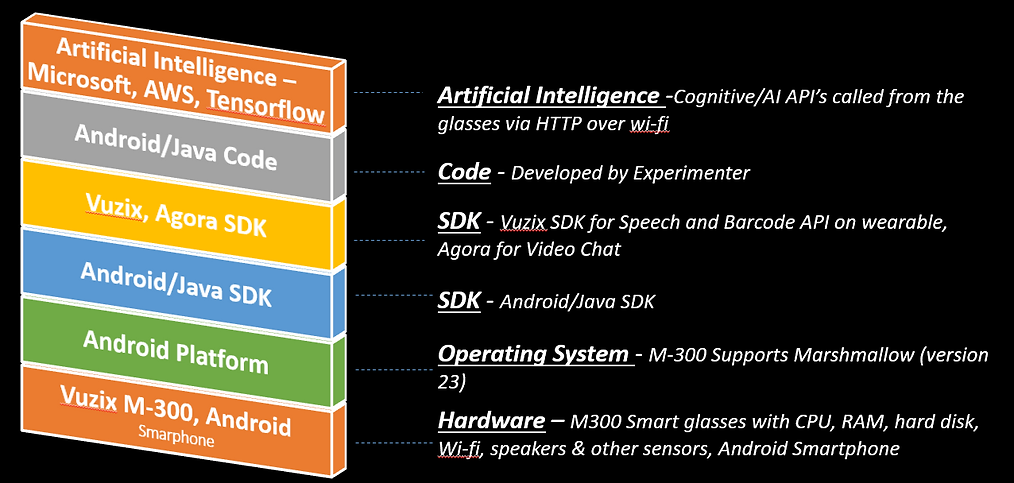
iSight – Capability Workflow
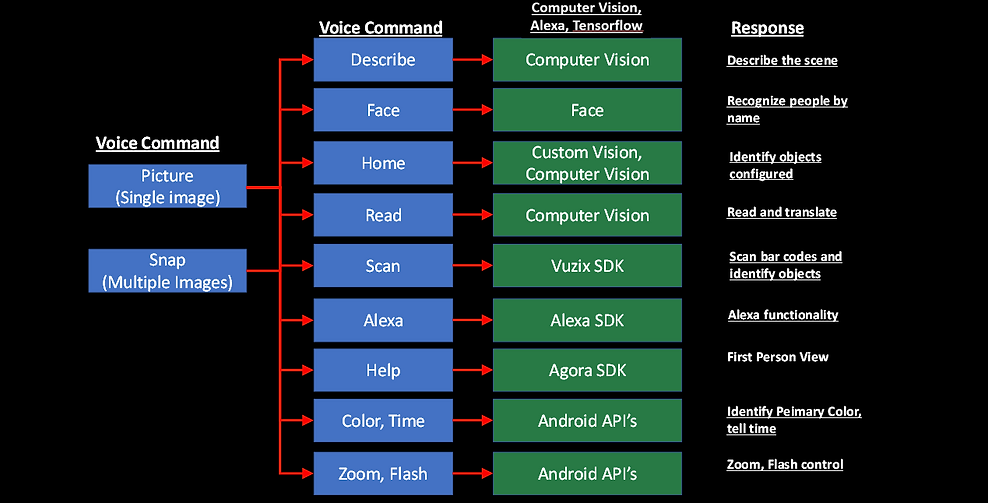
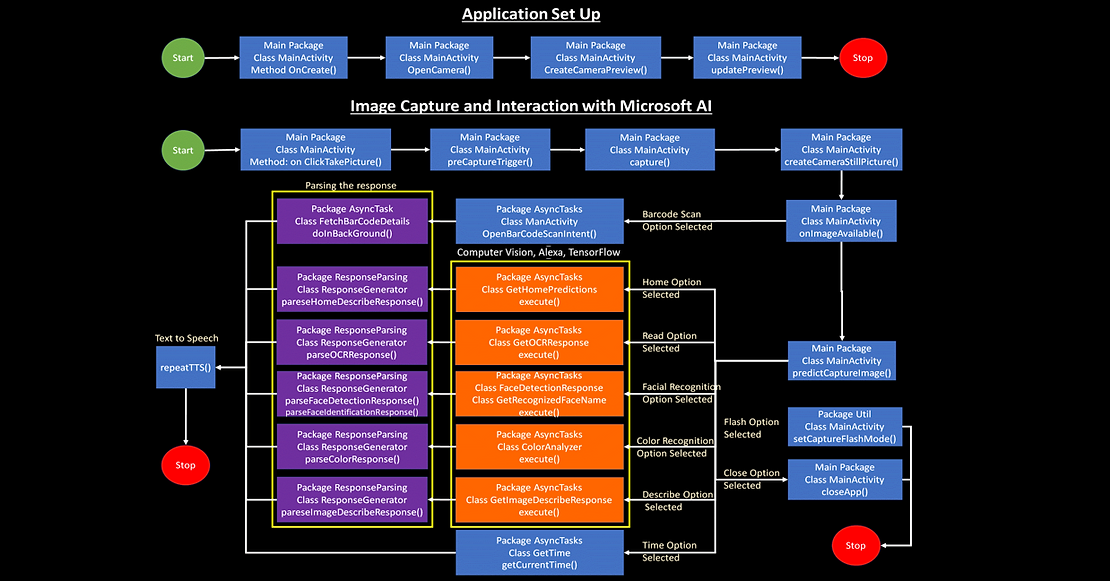
Programmable Smart Glasses
Very few smart glasses are available.
Glasses evaluated – •Vaunt •Google Glass •Intel Glass •MS HoloLens
•Vuzix Blade and Vuzix M 300 XL Vuzix M 300 XL selected
The cognitive capabilities in AI have been around for only about two years.
The Cognitive API evaluated - •Microsoft •Google •Amazon
Microsoft was finally chosen (best documentation & training material)